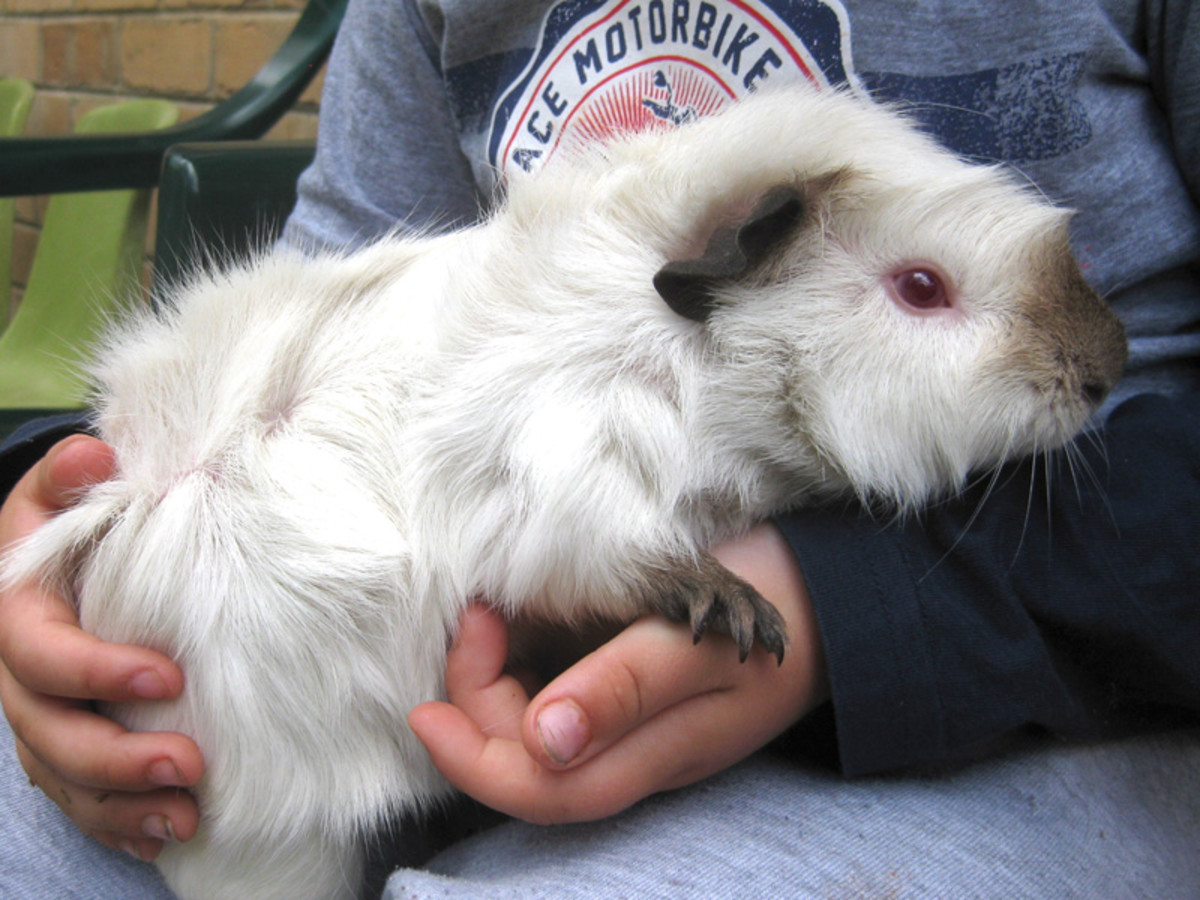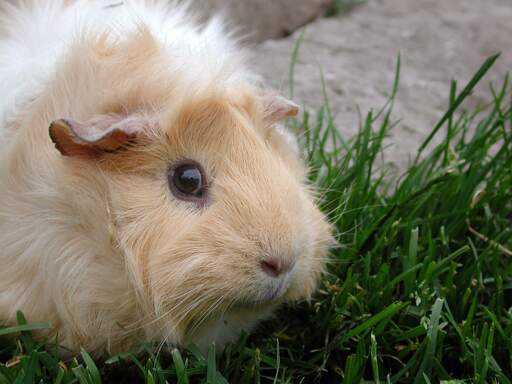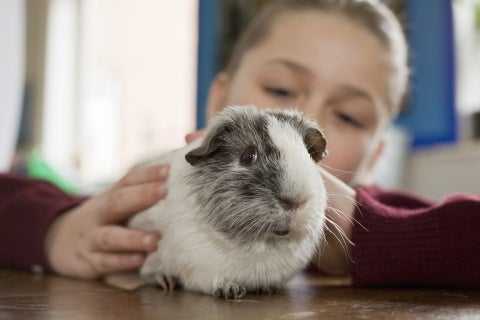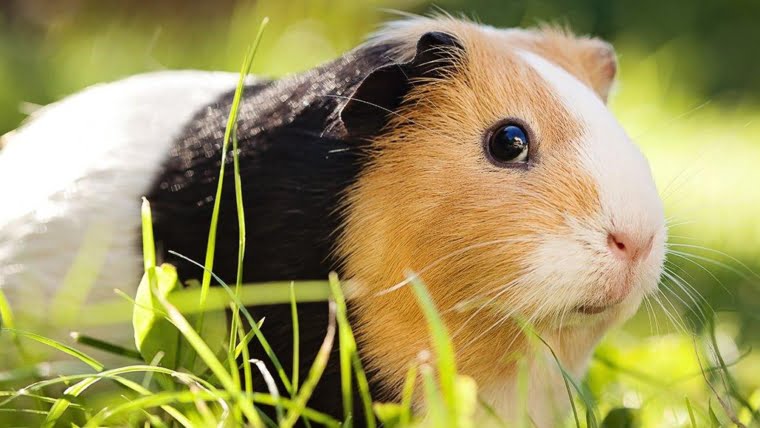Exploring the Abyssinian Guinea Pig: Characteristics, Care, and More
The Abyssinian guinea pig, often referred to simply as the Abyssinian guinea pig, stands out among its peers due to its distinct coat pattern of multiple rosettes. Like other guinea pig breeds, this breed, believed to have originated from South America, has garnered attention for its unique appearance and charming personality.
Understanding the characteristics and care requirements of the Abyssinian guinea pig is paramount for any prospective owner. This introductory section sets the stage for delving deeper into these aspects, emphasizing the significance of informed care and responsible ownership.
A. Brief Overview of the Abyssinian Guinea Pig Breed
The Abyssinian guinea pig, known for its characteristic swirls or rosettes in its coat, is one of the oldest and most popular breeds of guinea pigs. These rosettes are caused by a genetic mutation that affects the direction of hair growth, giving the Abyssinian its unique and attractive appearance. Despite its origins in South America, Abyssinian guinea pigs are now beloved pets worldwide for their lively and affectionate nature.
B. Importance of Understanding Its Characteristics and Care Requirements
Understanding the Abyssinian guinea pig’s unique characteristics and specific care needs is essential for providing it with a healthy and happy life. From grooming requirements to dietary considerations, being informed about the intricacies of this breed ensures that owners can meet their pet’s needs adequately. Furthermore, responsible ownership entails awareness of potential health issues and ensuring proper veterinary care when necessary. Overall, a comprehensive understanding of the Abyssinian guinea pig breed fosters a strong bond between owner and pet while promoting the well-being of these beloved companions.

Historical Background
The historical journey of the Abyssinian guinea pig sheds light on its origins and the development of its distinctive features over time.
A. Origins of the Abyssinian Guinea Pig Breed
The Abyssinian guinea pig traces its roots back to South America, where indigenous peoples likely domesticated their ancestors for food and companionship. Guinea pigs, including the Abyssinian variety, were first brought to Europe by Spanish and Portuguese explorers in the 16th century, where they quickly gained popularity as exotic pets among nobility and scholars.
The specific origins of the Abyssinian variation are somewhat obscure, but it’s believed to have emerged through natural genetic mutations within guinea pig populations in the Andes region. Over time, selective breeding likely contributed to stabilizing and propagating the Abyssinian’s distinctive coat pattern, resulting in the breed recognized today.
B. Evolution of Its Distinctive Coat and Other Physical Traits
The evolution of the Abyssinian guinea pig’s distinctive coat and other physical traits is a testament to natural selection and human intervention. Initially, the Abyssinian’s coat likely exhibited simpler patterns, but the characteristic swirls or rosettes became more pronounced and standardized through generations of breeding.
Selective breeding practices aimed at accentuating desirable traits, such as the number and arrangement of rosettes, contributed to the refinement of the Abyssinian’s appearance over time. Additionally, diet, habitat, and environmental conditions may have influenced the development of other physical characteristics, such as body size and shape.
Overall, the historical background of the Abyssinian guinea pig illuminates its journey from humble beginnings in South America to its status as a beloved companion animal with unique and sought-after features. Understanding this history enriches our appreciation for the breed and provides insight into its evolution and development as a distinct breed of guinea pig.
Characteristics of the Abyssinian Guinea Pig
Exploring the Abyssinian guinea pig’s distinct characteristics offers insights into its physical attributes and behavioral tendencies.
A. Physical Appearance
1. Description of the Coat:
- Rosettes: The hallmark feature of the Abyssinian guinea pig’s coat is its distinct swirls or rosettes. These rosettes are formed by hair growing in multiple directions from a central point, creating a textured and visually appealing pattern.
- Length and Texture: Abyssinian guinea pigs typically have short to medium-length hair with a coarse texture, contributing to the rugged appearance of their coat.
- Colors: Abyssinian guinea pigs come in a variety of colors and combinations, including but not limited to black, brown, white, cream, and various shades of gray and tan. The rosettes often showcase a contrasting color to the base coat, enhancing their striking appearance.
2. Body Structure:
- Size: Abyssinian guinea pigs are generally medium-sized compared to other guinea pig breeds, with adults typically weighing between 1.5 and 2.5 pounds.
- Shape: They have a compact, rounded body shape, well-developed hindquarters, and slightly arched back.
- Distinguishing Features: Besides their distinctive coat pattern, Abyssinian guinea pigs may exhibit other unique features, such as rounded ears, bright eyes, and a lively expression, which add to their charm.
B. Temperament and Behavior
1. General Disposition:
- Sociability: Abyssinian guinea pigs are known for their friendly and sociable nature. They often enjoy the company of humans and other guinea pigs.
- Activity Levels: They are typically active and curious creatures, displaying playful behaviors such as popcorning (small jumps) and exploring their surroundings.
- Interactions with Humans: Abyssinian guinea pigs can form strong bonds with their caregivers, often seeking attention and affection through gentle vocalizations and nudges.
2. Unique Behavioral Traits:
- Vocalizations: Abyssinian guinea pigs may have distinct vocalizations, including squeaks, purrs, and chirps, which they use to communicate their needs and express emotions.
- Curiosity: They are naturally curious animals, often enthusiastically investigating new objects and environments.
- Independence: While sociable, Abyssinian guinea pigs also appreciate independence and may exhibit a degree of assertiveness in their interactions with other guinea pigs.
Understanding these characteristics enables owners to provide appropriate care and enrichment tailored to the Abyssinian guinea pig’s needs, fostering a rewarding and fulfilling relationship between pet and caregiver.

Abyssinian Guinea Pig Care
Proper care is essential for Abyssinian guinea pigs’ health and well-being. This section outlines the key aspects of their care, including housing, diet, grooming, and health considerations.
A. Housing Requirements
1. Cage Size, Bedding, and Environmental Enrichment:
- Cage Size: Abyssinian guinea pigs require spacious cages to accommodate their active nature. A minimum cage size of 7.5 square feet for one guinea pig is recommended, with additional space for each additional guinea pig.
- Bedding: Use safe and absorbent materials such as paper-based or fleece bedding to maintain cleanliness and comfort.
- Environmental Enrichment: Provide toys, tunnels, and platforms to encourage physical activity and mental stimulation. Rotate toys regularly to prevent boredom.
2. Importance of Providing Hiding Spots and Exercise Opportunities:
- Hiding Spots: Include hiding spots such as igloos or tunnels to give Abyssinian guinea pigs a sense of security and privacy.
- Exercise Opportunities: Encourage daily exercise by providing a large, safe play area outside the cage or using a guinea pig-safe exercise wheel.
B. Diet and Nutrition
1. Dietary Preferences and Nutritional Needs:
- Hay: Offer unlimited Timothy hay, essential for dental health and digestive function.
- Pellets: Provide high-quality guinea pig pellets formulated with vitamin C, as guinea pigs cannot produce this vitamin on their own.
- Fresh Vegetables and Fruits: Supplement the diet with fresh vegetables and occasional fruits rich in vitamin C, such as bell peppers, kale, and strawberries.
- Water: Ensure access to clean water, preferably through a drip bottle or shallow dish.
2. Recommended Feeding Schedule and Variety of Food Options:
- Feeding Schedule: Feed small pellets daily and unlimited access to hay and fresh vegetables. Offer fruits as occasional treats to avoid overconsumption of sugar.
- Variety: Rotate vegetables and fruits regularly to provide diverse nutrients and flavors.
C. Grooming and Maintenance
1. Specific Grooming Needs Due to the Coat Structure:
- Brushing: Regularly groom the Abyssinian guinea pig’s coat with a soft-bristled brush to prevent matting and remove loose hair.
- Bathing: Only bathe when necessary, using a mild guinea pig shampoo and ensuring thorough drying afterward to prevent chilling.
2. Tips for Maintaining Overall Health and Cleanliness:
- Nail Trimming: Trim nails regularly to prevent overgrowth and discomfort.
- Ear and Teeth Checks: Monitor ears and teeth for signs of infection or overgrowth, seeking veterinary attention if needed.
- Cage Cleaning: Clean the cage regularly to maintain hygiene, replacing bedding and washing accessories as needed.
D. Health Considerations
1. Common Health Issues and Potential Genetic Predispositions:
- Respiratory Infections: Abyssinian guinea pigs may be prone to respiratory issues, so monitor for signs such as sneezing or wheezing.
- Dental Problems: Due to their continuously growing teeth, dental issues such as overgrowth or malocclusion can occur.
- Skin Conditions: Abyssinian guinea pigs may be more susceptible to skin problems, including mites or fungal infections, due to their coat structure.
2. Veterinary Care and Preventive Measures:
- Regular Check-ups: Schedule routine veterinary examinations to monitor overall health and detect potential issues early.
- Vaccinations: Discuss with your veterinarian the necessity of vaccinations, particularly for conditions in your area.
- Parasite Control: Implement a parasite prevention plan, including regular treatment for external and internal parasites.
Adhering to these care guidelines ensures that Abyssinian guinea pigs thrive in their environment, enjoying good health and happiness as cherished companions. Regular observation and prompt veterinary care are essential for maintaining their well-being.






